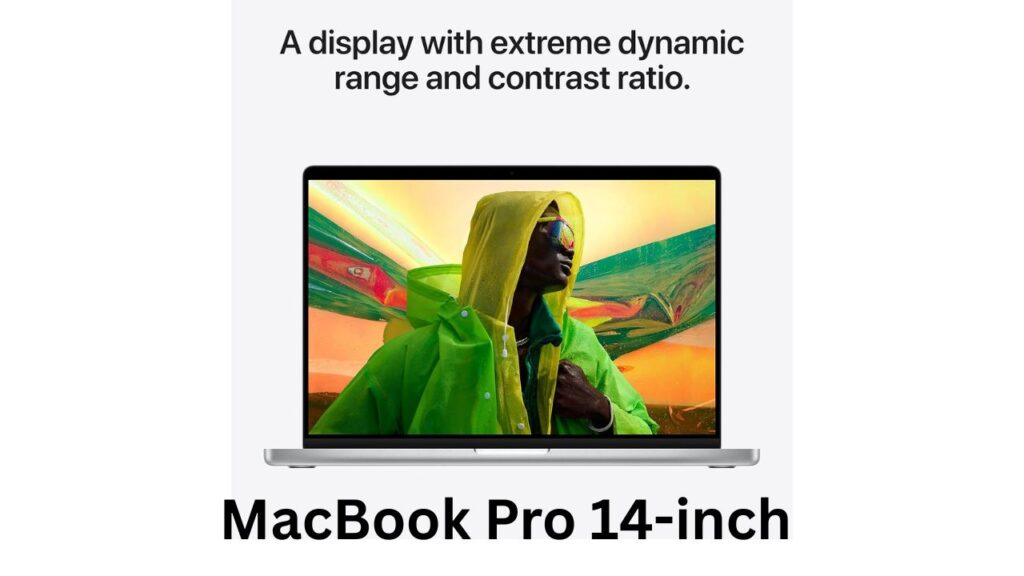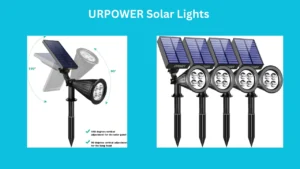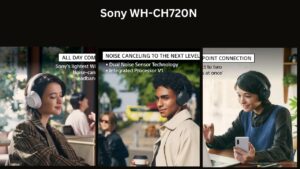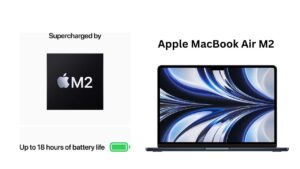Introduction: Why Choose the MacBook Pro 14-inch?
The MacBook Pro 14-inch occupies a unique position in Apple’s laptop lineup: it’s positioned as a high-performance, portable workhorse that sits between the ultraportable MacBook Air line and the larger, slightly more powerful 16-inch MacBook Pro. For buyers who want serious performance for creative or professional work but still value a compact footprint, the 14-inch model often represents the best compromise.
- Who should consider it? Students with demanding workloads, professionals (developers, designers, video editors), and creators (photographers, musicians, content creators) who need sustained performance and a high-quality display but prefer something more portable than the 16-inch model.
- What makes it different from other MacBooks? The 14-inch model combines Apple’s higher-tier silicon (M-series Pro/Max chips), a mini-LED Liquid Retina XDR display with ProMotion, a broad port selection including MagSafe, and sustained performance through an active cooling system — features that set it apart from the fanless MacBook Air and entry-level MacBook Pros.
1. Design and Build Quality
- How premium is the design? The MacBook Pro 14-inch continues Apple’s tradition of premium aluminum unibody construction. The build feels robust and refined: tight tolerances, matte display bezels, and a hinge that balances screen motion smoothly. The industrial design emphasizes durability and minimalism.
- Is the 14-inch size comfortable for daily use? Yes. The 14-inch footprint hits a sweet spot: it provides more screen real estate than 13.3-inch laptops while remaining compact enough for daily commuting and café work. The added vertical screen space—thanks to slimmer bezels and support for taller resolutions—makes productivity tasks more comfortable.
- How heavy and portable is it? Typically, the 14-inch Pro weighs between roughly 3.5 to 3.7 pounds (1.6–1.7 kg) depending on configuration. That’s slightly heavier than ultraportables but still very portable for a performance laptop. The size and weight make it practical for travel or daily carry without feeling burdensome.
2. Display Quality
- Does it have the best display for content creators? It’s among the best laptop displays available. The 14-inch Liquid Retina XDR is tailored to professional workflows where color accuracy, high dynamic range, and brightness matter.
- How good is the Liquid Retina XDR display? The mini-LED panel delivers excellent peak brightness for HDR content, deep blacks, excellent contrast, and wide DCI-P3 color coverage. This combination benefits photo and video editors, and anyone working with HDR media.
- Is the 120Hz ProMotion feature worth it? For general use, ProMotion (adaptive refresh rate up to 120Hz) makes scrolling, window movement, and UI animations feel exceptionally fluid. For creative work like drawing with a stylus (on side devices or using supported apps) and general system responsiveness, it’s a tangible quality-of-life improvement. For pure battery savings, the adaptive nature also helps—refresh rate drops when static content is displayed.
3. Performance and Hardware
- Which chip is better: M3 Pro vs. M3 Max in the 14-inch MacBook Pro?
- M3 Pro: Excellent balance of performance and efficiency. Ideal for most professionals: software development, moderate to heavy photo/video editing, multi-track music production, and multitasking.
- M3 Max: Significantly more GPU cores, memory bandwidth, and higher unified memory configurations. Best for those running heavy GPU tasks: high-res video color grading, 3D rendering, complex simulation, or large-scale machine learning workloads.
- Choice depends on workload: choose M3 Pro for strong all-around performance and better price/efficiency; choose M3 Max if you routinely hit GPU or memory bottlenecks.
- How well does it handle video editing, coding, or music production? Very well. The M-series chips offer fast video encoding/decoding, multiple real-time streams in Final Cut Pro or Premiere (performance varies by codec), lightning-fast compile times for code projects, and low-latency audio processing for large track counts and plugin chains. Thermal headroom in the 14-inch allows sustained loads longer than fanless laptops.
- Can it replace a desktop PC? For many professionals, yes. The 14-inch Pro can replace a desktop for software development, photo/video editing, and audio production—especially combined with external displays and peripherals. Power users who need maximum GPU/compute or who require internal expandability (e.g., multi-drive RAID, PCIe cards) might still prefer a desktop workstation.
4. Battery Life and Charging
- How long does the battery last in real use? Real-world battery life varies by configuration and workload. Light tasks (web browsing, document editing) often yield 10+ hours; heavier tasks (video export, sustained compilation) will drain the battery more rapidly, often in a few hours. Apple’s M-series efficiency typically yields better endurance than comparable Intel-based pros.
- Is fast charging available? Yes. Apple supports fast charging on supported configurations when purchased with the appropriate higher-wattage power adapter (e.g., 67W, 96W, or higher depending on the chip and options). MagSafe charging usually supports faster top-ups than some low-watt USB-C adapters.
- Is the battery good enough for travel or work on the go? For many users, yes. The combination of efficient silicon and a large battery makes it a reliable travel companion. Heavy creative workloads will consume battery faster, so for extended sessions away from power you may want to bring the charger.

5. Keyboard, Trackpad, and Ports
- How comfortable is the typing experience? Apple’s Magic Keyboard on the Pro models is widely regarded as comfortable, with good key travel and stability. The larger design of the 14-inch chassis yields a full-size layout with function keys (or Touch ID and function row depending on model/year).
- Does it have enough ports for professionals? The 14-inch Pro includes a more generous port selection than the MacBook Air: typically MagSafe charging, multiple Thunderbolt/USB-C ports, HDMI, and an SD card slot. This reduces the need for dongles and is highly appreciated by photographers and videographers. Port selection is generally sufficient for most professionals.
- Is MagSafe charging better than USB-C? MagSafe offers a dedicated charging connection that frees up USB-C ports and includes a magnetic safety feature to prevent the laptop from being pulled off surfaces by the cable. It’s convenient and practical; USB-C charging remains versatile for external hubs and power delivery.

6. Audio and Camera Quality
- How good are the speakers? MacBook Pro 14-inch typically features a high-fidelity six-speaker system with force-cancelling woofers and wide dynamic range. Speakers are among the best in laptops, delivering clear mids, strong bass presence for a laptop, and good spatial audio support—useful for video editing and media consumption.
- Is the 1080p webcam good enough for video calls? A 1080p FaceTime HD camera is a solid improvement over older 720p options. It provides clear, detailed video for conferencing, and combined with the machine’s processing and image signal pipeline, achieves better dynamic range and color than many laptop webcams. For professional streams or studio-quality content, external cameras still offer superior control and quality.
7. Software Experience (macOS)
- How does macOS run on the MacBook Pro 14-inch? Exceptionally smoothly. Apple’s control over both hardware and software yields tight optimization: fast wake, efficient power management, and optimized drivers for the silicon. Apps that are updated for Apple silicon often show significant performance and battery-efficiency gains.
- Does it support iPhone and iPad apps? On Apple silicon, macOS can run iOS and iPadOS apps where developers allow it. However, the experience varies because many apps are touch-first; desktop-focused alternatives or native macOS versions generally provide a better experience.
- Is it better than Windows laptops for productivity? “Better” depends on workflow. macOS excels in developer environments, creative applications (Final Cut Pro, Logic Pro), and integration across Apple devices (Handoff, AirDrop, Universal Clipboard). Windows machines offer broader software compatibility (certain enterprise or specialized apps), and can be more configurable/upgradable. For many creative professionals and developers invested in the Apple ecosystem, macOS + Apple silicon is the preferred productivity environment.
8. Pricing and Value for Money
- Is it worth its high price? For users who need its unique blend of performance, display quality, port selection, and battery life, it’s generally worth the premium. The 14-inch Pro is priced as a professional tool; casual users who won’t use the advanced capabilities may find the MacBook Air or lower-spec laptops to be better value.
- Should you buy the base model or upgrade? For many users, the base M-series Pro model (with modest RAM and SSD) will be sufficient. Consider upgrading memory and storage if your workflows require:
- Large video projects (higher SSD and more RAM)
- Heavy multitasking or VMs (more RAM)
- Long-term future-proofing (higher unified memory) Upgrading the CPU/GPU to M3 Max should be reserved for users with consistent, GPU-bound workloads.
- Is it a good investment compared to the 16-inch model? The 16-inch offers a larger display and potentially higher thermal headroom for sustained heavy loads—beneficial for top-end configurations. If portability is critical, the 14-inch is the better pick. For maximum performance and screen real estate, choose the 16-inch; for a more portable pro machine, choose the 14-inch.
9. Pros and Cons
- Pros
- Excellent performance-per-watt thanks to Apple silicon (M3 Pro/Max)
- Outstanding mini-LED Liquid Retina XDR display with ProMotion
- Solid battery life for its class
- Premium build and design
- Great port selection including MagSafe and SD slot
- Very good speakers and improved webcam
- macOS optimization and ecosystem benefits
- Cons
- High starting price relative to mainstream laptops
- Limited to Apple ecosystem and macOS app compatibility (some specialized Windows apps may need workarounds)
- Some users may prefer the larger 16-inch for extreme workloads or bigger screen space
- Upgrades can be expensive (RAM/SSD are non-user-upgradable and costly at purchase)
- Under extremely sustained heavy loads, thermal throttling is possible—though less so than thinner fanless designs
10. Comparison with Alternatives
- MacBook Pro 14-inch vs. MacBook Air M2
- Choose MacBook Air M2 if: you prioritize thinness, weight, day-to-day battery life, and budget; your workloads are light (web, office apps, light photo editing).
- Choose MacBook Pro 14-inch if: you need sustained performance, superior display, more ports, and better thermal management for creative or professional tasks.
- MacBook Pro 14-inch vs. Windows laptops (Dell XPS, Razer Blade, ASUS ZenBook)
- Dell XPS: Comparable in premium build and display quality; XPS offers Windows flexibility, often easier upgrade paths, and diverse port options. The MacBook Pro generally excels in battery efficiency and optimization with macOS and Apple silicon.
- Razer Blade: Often targets gaming and GPU-heavy tasks; Razer typically offers discrete GPUs and Windows gaming ecosystem advantages. MacBook Pro beats Razer for battery life, noise levels, and macOS-optimized creative apps.
- ASUS ZenBook: Typically more value-driven with a variety of configurations. ZenBooks can be strong choices for Windows users who want a balance of price and performance. MacBook Pro provides stronger integration with Apple services and a more cohesive hardware/software experience.
11. Final Verdict
- Who should buy the MacBook Pro 14-inch?
- Creators and professionals who need a portable machine with serious performance: video editors, photographers, developers, and music producers who value the Liquid Retina XDR display, robust I/O, and high sustained performance.
- Power users who travel frequently and want a balance between portability and workstation-level performance.
- Is it future-proof for the next 5 years?
- Largely yes. Apple’s M-series silicon and macOS updates generally provide strong longevity and performance across several years. If you choose sufficient RAM and storage at purchase, the 14-inch Pro should remain capable and relevant for typical professional workloads for 4–6 years or more. However, as workloads evolve (e.g., heavier AI/ML tasks), top-end configurations (more RAM, M3 Max-level GPU) will age more gracefully.
12. Closing Notes on Buying and Price
- Because I can’t fetch live internet prices here, check major retailers like Amazon, Apple’s online store, and authorized resellers for current deals and availability. Amazon often lists multiple sellers and configurations; search for discounts on prior-generation models or certified refurbished units if you’re price-sensitive.
- When deciding configuration, prioritize enough unified memory and SSD capacity for your expected workloads—these are not user-upgradeable later.
Which would you prefer?
Apple MacBook Air M1 vs M2 — A Detailed Comparison




